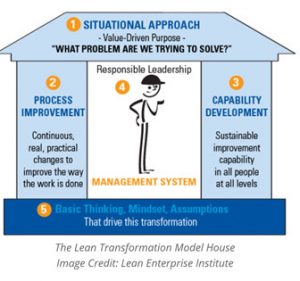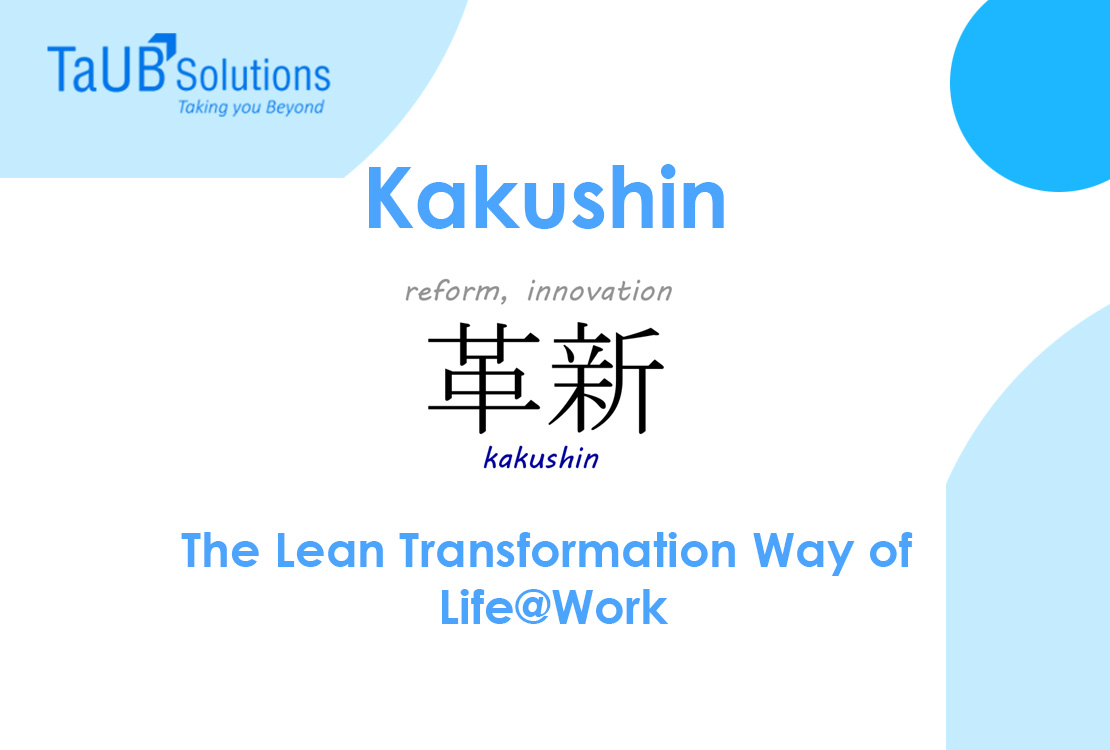In the world of Lean, there are three terminologies used in the domain of improvement. Kaizen, Kaikaku and Kakushin.
Kaizen (改善) = change+good = continuous improvement (DMAIC). Kaikaku (改革) = change + radical = reform/big improvement (DMAIC). Kakushin (革新) = new + transformation = innovation / reform / renewal (DMEDI)
Recently I had a conversation about Lean transformation and immediately the first thing I thought of was, Kakushin. But what is Kakushin? How do we approach? Is there a methodology or framework in place? This post helps to provide an overview on Kakushin to help readers to have a brief understanding on Kakushin.
Before we proceed, a note that, Kakushin does not mean you can ignore Kaizen and Kaikaku.
The concept of Kakushin, is to reform and transform the organization from current position to a desired future state in a process of shifting business model and learning new ways of thinking and cultural transformation (attitude and behavior). Below is the summary adapted from Lean IT Leadership publication and Lean transformation model from Lean Enterprise Institute.

The lean transformation (Kakushin) of organization has to focus on the 5 elements discussed below,
Value driven approach.
What problems are we trying to solve and why are we solving this?
- Kakushin is a top-down approach.
- Leaders could take a reactive approach to look at pain-points or a proactive approach.
- Some examples of problems that leaders try to solve are, Increase productivity, Increasing profits, Increasing customer satisfaction, Increase quality and etc.
Process Improvement.
How will we improve the activities and practices in our organization which delivers value?
- End-to-end activities to deliver value should be considered.
- Improving things just for the sake of improving is not desired. Improvement should be aligned with pointer 1.
- Lean tools such Value Stream Mapping, Plan-Do-Check-Act, Kanban, A3 and others should be adopted. Waste elimination, non-essential non-value-added should be eliminated.
Capability Improvement.
How can we engage, develop and continually improve the capabilities of the people?
- People / employees in an organization are very important to the success of lean transformation.
- Organizational success is not possible if we do not help people’s capabilities.
- Capability development should be part of strategy in Lean transformation.
Responsible Leadership and Management System.
What are the leadership traits, behaviors and management system required by the organization to support the new ways of working?
- In a lean organization, all employees should have a leadership thinking.
- Management system helps leaders to be data-driven and not to act on intuition.
- Lean leader should eventually help the teams to be independent and self-organized, in long-run to help organization to scale and transform with minimal resource and efforts.
Basic thinking, mindset and Assumption.
What basic value (attitudes, behavior and culture) that underlie / drives the transformation.
- Though easily said, this is one of the most difficult to accomplish.
- Lean thinking is a philosophy in way of work, anchoring the way people think and act.
- Values are demonstrated by leaders demonstrated through real change in behavior.
In conclusion, embarking on Kakushin – Lean transformation requires strategical planning and lead from the top of organizational hierarchy. A comprehensive road map on the approach and a continual improvement approach such as Kaizen should be adopted.
Lastly, in a lean transformed organization, lean culture should be a way of life@work.
“Lean isn’t lean if it doesn’t involve everyone”
– John Shook
Dinesh, With over 17 years of progressively responsible experience, extensive top-level engagement in information-technology, value-added executive in the Senior IT Management role creating and delivering value to business. As a key member of Senior Management Team, maximize development, delivery and technical support of multi-million dollar, technology-based business solutions, meeting end-user requirements, cost, and quality objectives through timely development and execution of information system functions and IT Operations.


